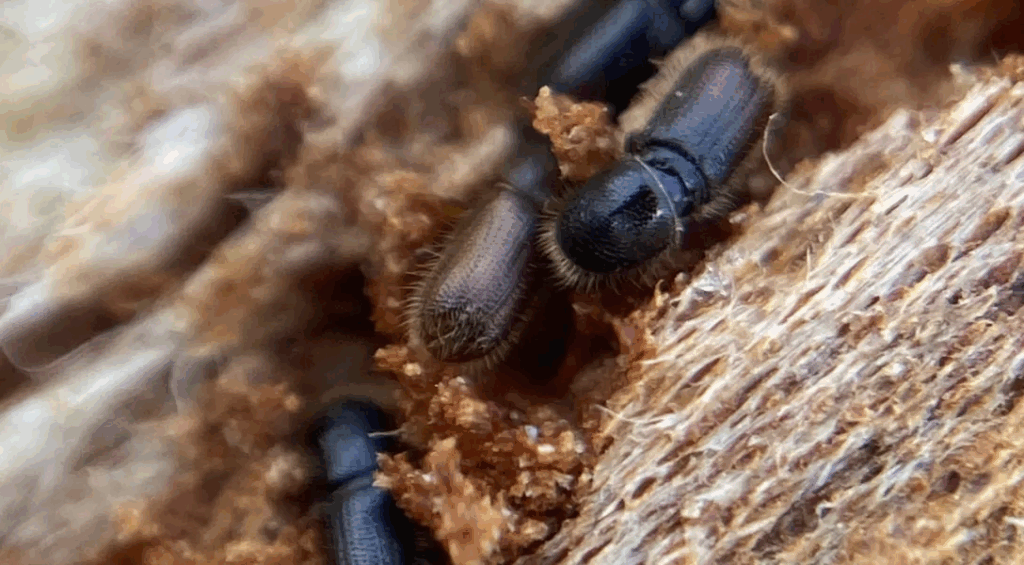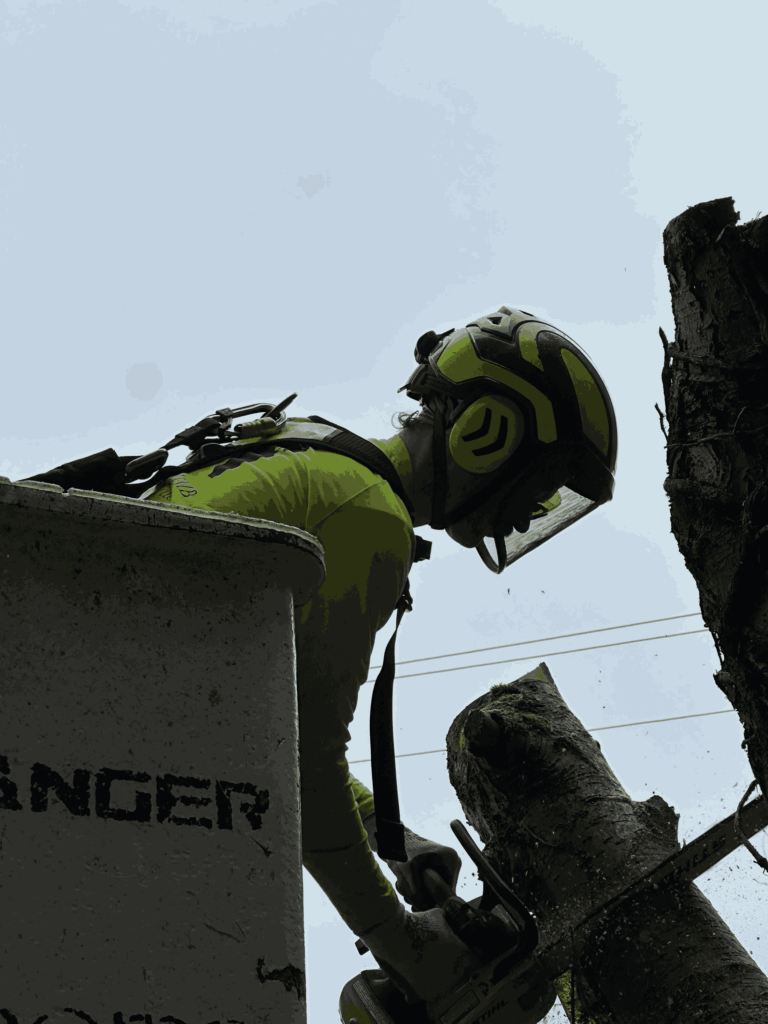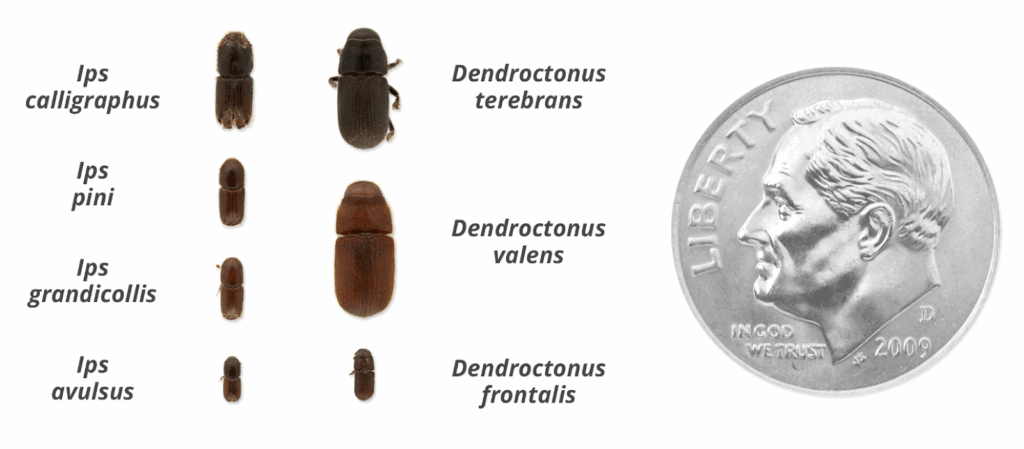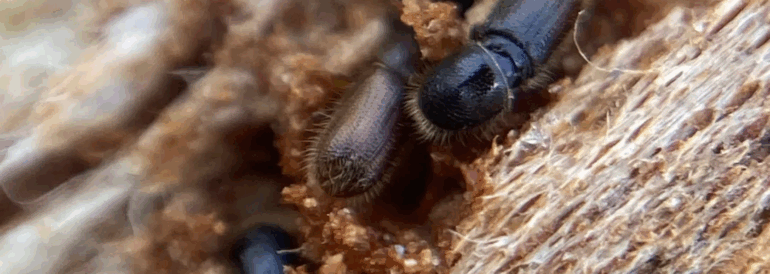Bark beetles are one of the worst tree pests in North America that kill millions of trees annually. These are small insects that barely measure a quarter of an inch in length and bore into the bark of the pine and other conifers blocking important nutrients and water.
Their assaults have the potential of destroying not only the natural forests, but also residential grounds, at a high cost of removing trees and creating more susceptibility to wildfires.
Warmer winters, drought and heavy forest conditions have increased outbreaks leading to timber and restoration costs of billions of dollars. Infestations need to be contained at early stages before the disease spreads.
The guide by allen tate will be on identifying the damage of the bark beetle, the most effective and natural remedies, and when their services are required. By acting appropriately, you can save your trees and maintain the health of forests and even make sure that infestation does not occur in the future.
Understanding Bark Beetles – Know Your Enemy

The beetles are small 2-8 millimeter cylindrical insects that breed and live under the tree bark.
They assault trees below natural defenses especially when stressed or weakened and when affected by drought.
- The Mountain pine Beetle, Southern Pine Beetle and Ips beetles are the most devastating species found in North America. In warm months, it takes these beetles a period of about 30-60 days to complete their life cycle.
Upon hatching, adult beetles bore holes in the tree by boring through the outer layer of the bark, after which the infant beetles bore holes in the inner layer of the tree, and the holes created by the insects prevented the tree from transporting nutrients and water.
- Using this girdling technique, the tree is killed in weeks or months. The annual infestations with the bark beetles ruin over 100,000 acres of forest and cost timber worth over 100 million dollars.
Signs of Bark Beetle Infestation – Early Detection
Early Warning Signs (Weeks 1-4)
The first signs of bark beetle activity include small, round bore holes about 1-2 millimeters wide on the trunk or major branches.
Fine sawdust, known as frass, collects in bark crevices or at the base of the tree. They may also be small, white or reddish pitch tubes that are resin blobs on which the tree tried to protect itself. You may also find more woodpeckers since they peel the bark to find larvae that are feeding below.
Advanced Symptoms (Weeks 4-12)
The needles of the tree which have been infested as the disease advances become dull yellow and finally red or brown.
The external bark peels readily exposing tunnels drilled beneath the skin surface by the larvae. The top of the crown starts to die in most instances moving downwards.
When the discoloration is distributed over the greater part of the canopy, it is very unlikely that even treatment can restore the tree.
Species-Specific Clues
Mountain Pine Beetles cause distinctive blue staining in the inner wood, Southern Pine Beetles create S-shaped tunnels, and Ips beetles form Y or H-shaped gallery patterns beneath the bark.
Preventive Bark Beetle Spray – Chemical Protection
Effective Insecticide Options
Permethrin products such as Astro and Dragnet are proven choices. They are effective when used in the month of March or April to avoid beetle fly strike by preventing 70 to 85 percent and they will last one to two seasons when used before the flight of the beetles.
The same is done by products like Onyx and Talstar of bifenthrin with a 70-90% success and good residual life.
Carbaryl or Sevin is able to prevent 60 to 80 percent of the attacks and generally requires a higher frequency of application. Professional spray will cost some 150 to 400 dollars per mature tree with respect to height, accessibility, and the local charges. Reapply if risk remains high after the protection window.
Application Requirements
The equipment required to force insecticide into cracks of the bark and upper stems requires high pressure.
Apply at the beginning of the season when beetles have not started their flight and make sure it is on a dry day and there is no rain forecast in 24 hours.
Residual protection may last between 12 and 24 months, although in case of heavy pressure, it may be shortened. Large trees are best handled by licensed professionals for safety and full coverage.
Systemic Insecticide Treatment – Internal Protection
Emamectin Benzoate (Tree-age)
Emamectin benzoate is yet another potent systemic insecticide that is sprayed directly to the trunk of the tree.
It has small holes drilled around the base with the chemical flowing through the vascular system of the tree to house the inner bark where beetles feed.
This method offers long-term internal protection lasting two to three years and is about 80-95 percent effective when applied correctly. Treatments cost around 250 to 500 dollars per mature tree and work best for healthy trees that have not yet been severely infested.
Fipronil Formulations
Fipronil-based products also provide strong systemic protection for two to three years. They are injected by licensed professionals using specialized equipment and achieve high effectiveness against bark beetle attacks by spreading through the xylem and phloem to areas where beetles feed.
Key Advantages
Systemic insecticides produce no spray drift, last longer than surface sprays, and pose fewer environmental risks. Because they move internally, they protect the entire tree more evenly and efficiently.
How to Get Rid of Bark Beetles Naturally – Pheromone Control
Verbenone Pheromone Products

Verbenone pouches use an anti-aggregation signal that tells arriving beetles the tree is already full.
This natural message reduces new attacks without chemicals. Use the pouch that is attached to the trunk at an elevation of approximately 5 to 6 feet. They last 4-6 months and cost 30 to 60 dollars per tree in each pouch and the pouch is valid throughout the flight season. At the right dose, verbenone will reduce attacks on each, high-value tree by approximately 50 70 percent.
Application Tips
Before the beetles start flying, place pouches, normally in March or April. One pouch per tree and change once during the active season on average every 4 to 6 months. Verbenone is effective with Mountain Pine Beetle and Southern Pine Beetle pressure particularly where the background population of beetles is thinned and there is an increase in the population of Sanitation around the house.
Supporting Natural Methods
Plant trees every week when in drought, put mulch around the root zone, prevent injury to the bark by the tools or equipment, and remove infected trees as soon as possible to reduce the local populations of beetles.
Removing Infested Trees – Sanitation Management
Removal Timing
When beetles are already under the bark it is impossible to save the tree. The elimination of infested trees between 4 and 8 weeks after the attack before adults can spread. Fall or winter removal is often safest for crews and reduces the chance of further beetle movement. Quick action protects nearby trees and keeps costs from escalating.
Disposal Methods

Process infested wood immediately.
Chipping or burning kills larvae and pupae inside the bark. In small logs, the whole debark is done, leaving galleries open to the air, and drying them, a process that is laborious, but effective. Do not store infested wood near living trees. If storage is unavoidable, keep it far away and covered until it is processed.
Area-Wide Coordination
Neighborhood or HOA-wide efforts work better than isolated action. Prioritize the worst trees first, then monitor the rest of the stand. An arborist can map infestations, plan removals, and coordinate safe disposal.
How to Get Rid of Bark Beetles in House – Indoor Infestations
Source Identification
The beetles that attack the bark in the interior are typically a result of the infected firewood, rough logs, and decorative wood fragments that do not belong to the structural timber of your home.
They do not destroy furniture and dry lumber. Search on or under the wood for small round holes of exit and fine sawdust, or frass.
The emergence of the beetles is triggered when the presence of warmth in the house accelerates their life cycle and it is unable to infest them again once the wood is dry.
Immediate Control

The best possible remedy is to get the wood infested by them out of your house immediately. (Image Credits: Joe Boggs)
Check and vacuum any beetles that have developed and store new firewood outside until it is in use.
Insect sprays should not be used indoors as the beetles will even die naturally once they have emerged. The issue typically resolves itself within two to four weeks as adults complete their life cycle.
Prevention
Keep firewood outside the home, check logs prior to taking them indoors and keep bark-covered or newly cut wood in your home.
Bark Beetle Prevention – Long-Term Strategies
Tree Health Maintenance
Healthy trees have a very low chance of being attacked by beetles. Water profusely each week in dry seasons, and spread a layer of mulch up to 2-4 inches covering the trunks, and ensure that the trunks are not damaged by the lawn mower or the motor vehicle. Light fertilizing is advised to keep the plants alive and pruning should only be done during the dormant period so that no sap is released to attract the beetles.
Landscape Management
Proper landscape design reduces beetle pressure. The population of trees is thin and dense to enhance the circulation of air and reduce stress. Plant trees in the right place, combine various species to make it less vulnerable and make sure that any trees that were destroyed or weakened by the storm are removed quickly before they are killed by infestation.
Monitoring and Drought Management
Inspect trees monthly during beetle flight season, looking for bore holes, pitch tubes, or sawdust at the base. During drought, prioritize deep watering for older or high-value trees, as dry conditions make them the easiest targets for attack.
Regional Bark Beetle Species and Specific Challenges

Comparison of common bark beetle species beside a dime for scale.
Mountain Pine Beetle (MPB)
The Mountain Pine Beetle primarily attacks high pines ranging around 4, 000-10, 000 feet. Milder winters and drought have assisted it in spreading over 14 million acres of the West. Prevention is the main concern: spray the bark on time before takeoff, reduce the number of trees in thick stands to decrease stress levels, and harvest the trees with high numbers of beetles to decrease the pressure in the area.
Southern Pine Beetle (SPB)
On the Southeast, SPB attacks loblolly, shortleaf, Virginia, and slash pines. It loses more than 400 million dollars of timber and urban trees every year. Control depends on fast detection and rapid suppression. Use cut-and-leave or cut-and-remove tactics to break expanding spots, then monitor edges closely for new pitch tubes and fresh attacks.
Ips Beetles
Ips species attack drought-stressed or damaged pines nationwide. Look for Y or H-shaped galleries under bark and top-down crown fade. Management focuses on tree vigor: water during drought, avoid trunk injury, remove storm slash promptly, and chip or burn fresh debris so it does not become a breeding site.
When to Call a Professional – Expert Intervention
When to Seek Help
It is recommended to hire a certified arborist in case there are over two or three trees that have bore holes or pitch tubes, or high-value trees, which are tree that has a value of $5,000 or more, or tall trees and trees that are not easily reachable. Pros can confirm species, stage of attack and the best manner of next action.
Benefits of Professional Service
Certified arborists time treatments precisely, use commercial-grade products and high-pressure equipment, and apply integrated IPM methods. This raises success rates dramatically compared with DIY attempts, especially on large trees where complete coverage, safe handling, and correct product selection are critical.
Cost and Value
Preventive treatments at 150 to 500 dollars per tree often avoid removals that cost 2,000 to 5,000 dollars or more.
FAQ Section
How to get rid of bark beetles naturally?
Use verbenone pheromone pouches, maintain tree vigor, and remove infested trees promptly.
How to get rid of bark beetles in the house?
Remove infested firewood, vacuum emerging beetles, and store future wood outdoors.
Can infested trees be saved?
No, once bark is penetrated and foliage turns red, the tree cannot recover; remove it within 4-8 weeks.







